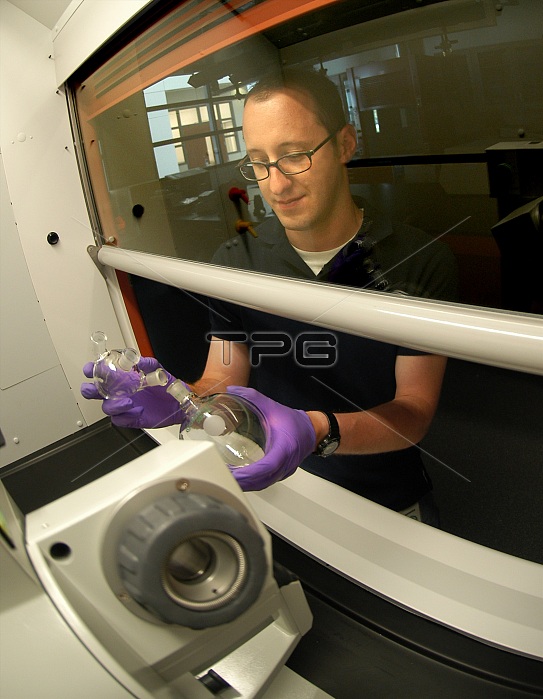
Using DNA, the molecule that carries life's genetic instructions, researchers at the U.S. Department of Energy's Brookhaven National Laboratory are studying how to control both the speed of nanoparticle assembly and the structure of its resulting nanoclusters. Learning how to control and tailor the assembly of nanoparticles, which have dimensions on the order of billionths of a meter, could potentially lead to applications ranging from more efficient energy generation and data storage to cell-targeted systems for drug delivery. Using optical measurements, transmission electron microscopy, and x-ray scattering at Brookhaven's National Synchrotron Light Source, BNL scientists have shown how to control the self assembly of gold nanoparticles with the assistance of various types of DNA. Their technique takes advantage of this molecule's natural tendency to pair up components called bases, known by the code letters A, T, G and C. The synthetic DNA used in the laboratory is capped onto individual gold nanoparticles and customized to recognize and bind to complementary DNA located on other particles. This process forms clusters, or aggregates, which contain multiple particles. The research group previously used rigid, double-stranded DNA to speed up and slow down the speed of nanoparticle assembly. Most recently, they also perfected a method for regulating the size of the resulting particle clusters by incorporating multiple types of DNA strands.
| px | px | dpi | = | cm | x | cm | = | MB |
Details
Creative#:
TOP22288574
Source:
達志影像
Authorization Type:
RM
Release Information:
須由TPG 完整授權
Model Release:
No
Property Release:
No
Right to Privacy:
No
Same folder images:

 Loading
Loading